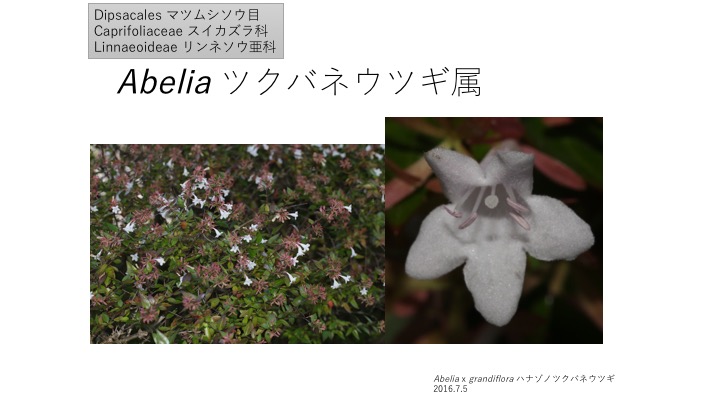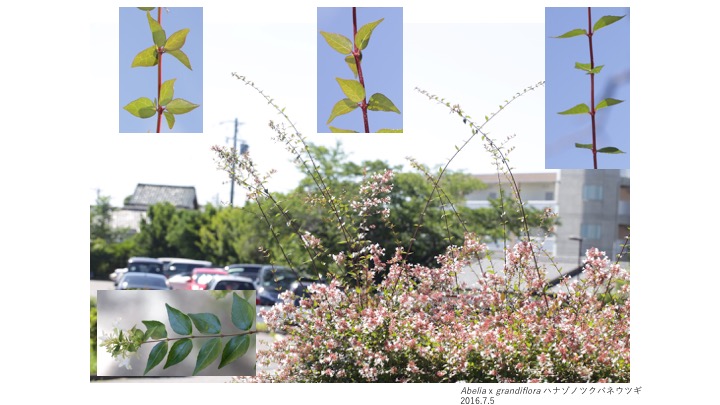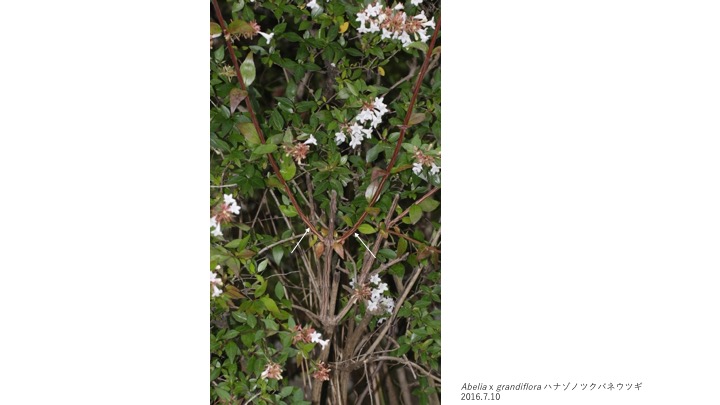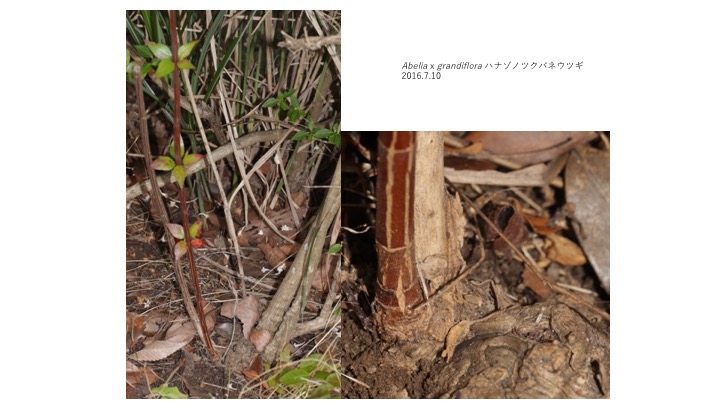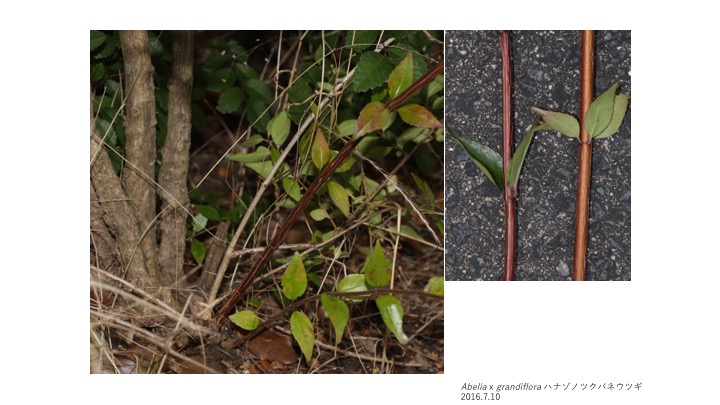ハナゾノツクバネウツギの葉は通常は対生であるが、徒長枝には対生、3輪生、4輪生のものがある。
Abelia x grandiflora usually forms opposite leaves but long shoots form opposite, three-whorled, and four-whorled leaves.
前年枝の葉腋から出た徒長枝は対生である(矢印)。
Shoots formed at leaf axils of a last-year shoot form opposite leaves (arrows).
四輪性の葉を持つ徒長枝は株元から生える。
Shoots with four-whorled leaves originate from the base of previous shoots.
三輪性の葉を付けるシュートも株元から生える。対生の葉を付けるシュートは前年枝の葉腋だけでなく、株元から生えることもある。この場合、対生シュートの方が三輪性シュートよりも細い。花の場合、メリステムの直径が大きくなると花器官の数が多くなるので(Kitazawa and Fujimoto 2015)、この場合も、株の基部からでる徒長枝と葉腋からでる徒長枝でメリステムサイズが異なるために、対生、三輪性、四輪性の違いが生じているのかもしれない。多くの植物では分裂組織の大きさは一定している場合が多いし、葉序も一定しているのが普通である。どうしてハナゾノツクバネウツギだけこのような変化が起こるのだろうか。
Shoots with three-whorled leaves are formed at the base of previous shoots. Shoots with opposite leaves are sometimes formed at the base of previous shoots as well as leaf axes. When shoots with opposite leaves are formed at the base, the stem of opposite shoots is thinner than that of three whorled shoots. As the number of floral organ depends on the meristem size (Kitazawa and Fujimoto 2015), the difference of leaf number in a whole may be caused by the difference of meristem size.
Kitazawa, M.S. and Fujimoto, K. 2015. A dynamical phyllotaxis model to determine floral organ number. PLOS Compt. Biol. 11: e1004145.

